Click here to get your Art Spark resources.
I’ll guide you through four weeks of beautiful and fun art projects that you can enjoy with your children. At home or at school, these process art projects will give you an interesting framework of activities that you can weave into your weeks, so your children are engaged, creating and enjoying themselves all through art. See more details of Art Spark here.
This extract from my new book Nurture Art looks at the benefits of process art for children. There’s a free poster and links to more process art resources that you can use with your children to help them explore art and exercise their creative muscles.
Free printable: the benefits of process art for children
Process art is not about teaching children how to do art. It’s about creating a space for them to discover it for themselves. Process art is about freedom, not rules.
With a practice of process art, we’re more interested in how the art is being created than in what the finished product is going to look like.
What’s wrong with a focus on a product, on a craft? Not so much. There is a place for, and a long history of, crafts. Crafts focus more on a particular skill, technique, or end result. For children, crafts can be a playful way to work on other skills, such as scissor skills or listening skills, or to learn about concepts such as shapes or symmetry.
Crafts may include a process art element, and can be a way to ease in to process art. Crafts can also result in beautiful decorations, gifts, and community events. But process art is different, and much more about a child’s own discovery, rather than adult-directed learning. It doesn’t mean you can’t all be inspired by a topic and sit down together to each create a ‘cat’, for example. It does mean to encourage everyone to freely choose the materials, color, shape, size, and design of their idea of a cat.
Process art is all about the experience: how you feel as you experiment with your materials, the ideas that you get, and the opportunity to try new things.
If the end result looks beautiful, consider that a bonus. But it is the doing, trying, thinking, and experimenting that is the main focus here. Sometimes you will consider the end product ugly. Great! You’ve learned something about the materials, colors, technique, or your own relationship to art. These mistakes are just as valuable to your art practice and development as an artist. Keep these ‘mistakes’ in your art journal or on display as much as you treasure your ‘masterpieces’.
The benefits of process art
Process art is freeing. It’s a wonderful way back into art for adults who have been switched off from art, perhaps at school, and who think “I can’t draw”. For children, process art is where we want to begin, introducing them to materials and techniques with an attitude of play and discovery.
Process art links strongly to science discovery. You are trying out materials, ideas and feelings, and discovering possibilities.
- How does this paint work / change / react?
- Why does this happen?
- I wonder what would happen if…?
This kind of art is about thinking. Artists work hard, take risks, make connections, daydream, turn old ideas into new ones, look at things closely, notice details, see the big picture, generate ideas, and try new things. These are all qualities I want my children to have and skills I think our future society and workforce will need.
Studies have shown that integrating the arts into the school curriculum results in increased attendance and better performance across a wide range of subjects such as English, science, and mathematics.
This knowledge leads us to want an art program which is available to all children. A focus on process over product can engage all children, regardless of previous experience or perceived talent. The limitations children feel elsewhere in life or learning can disappear when exploring process art, as each child can engage with the art in their own way.
Do you focus on process art with your children? How do you find they respond to the explorations? Do you think there is also a place for ‘crafts’? Join the conversation in the comments – I’d love to hear from you.
Download the Art Spark Resources
The Art Spark resources bring you 30 art projects that make it easy for you to explore creative techniques with your children and give them benefits of process art . There are lots of ideas that are very easy to set up, so whenever you want to do some art you’re all ready to go.
The projects including watercolours, mono printing, marbling, scrape painting, drip painting, frozen art, scratch art, printing techniques, yarn art, and ideas to explore shape, color, gravity and movement.
Also included are links to famous artists, well-known works, and art around the world, so you can go deeper into arts education including: Henri Matisse; Rex Ray; Pablo Picasso; Janet Sobel; Georgia O’Keefe; Paul Cezanne; Yves Klein; Guiseppe Arcimboldo; Jackson Pollock; Cy Twombly; Alberto Giacometti; Harry Bartoia; Lescaux, Altamira, and Ubirr cave and rock paintings; Japanese suminagashi; and Mexican Huichol art.
Click here to see the online art resources.
How to use this poster
Here’s a free printable poster celebrating the benefits of process art to children. Click that link and you can print it off and use it:
:: to go in your art journal as a reminder of the focus of your art explorations
:: as a poster to put on display in your art studio, classroom, kitchen or playroom
:: as a discussion prompt with your children. How do they feel about process art?
:: as a hand-out to give to the parents of the children you work with, to share with them the reasons why process art is so important and to help them understand the approach to art that you are taking with their children
Click through here to download all the Art Spark resources to use with your children.


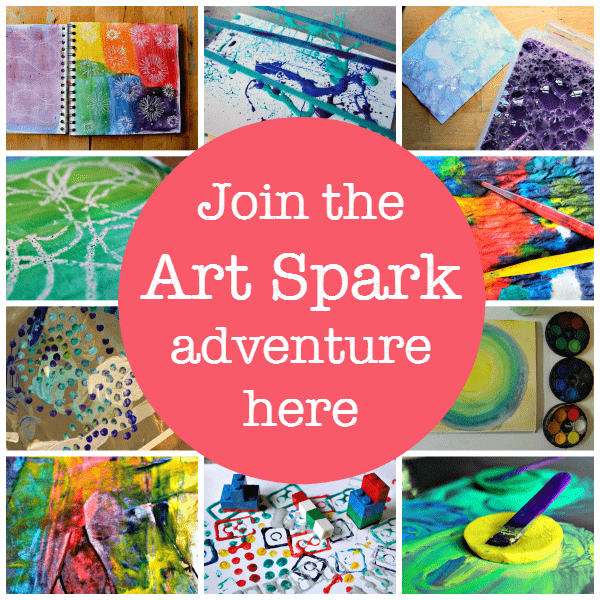
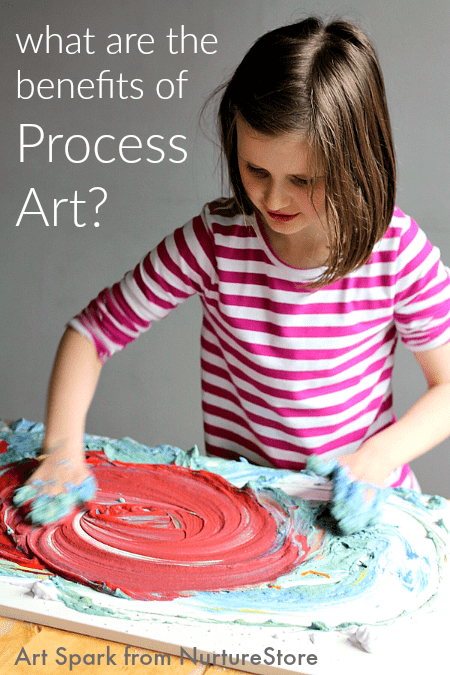
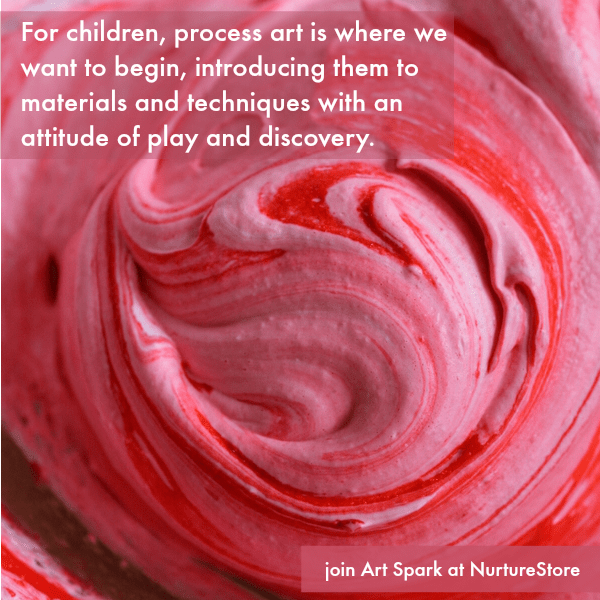

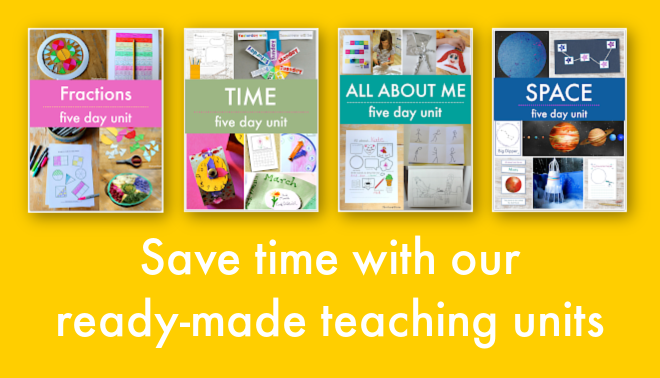
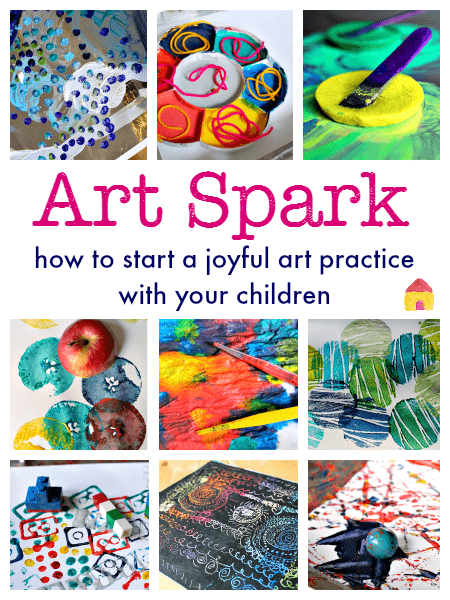
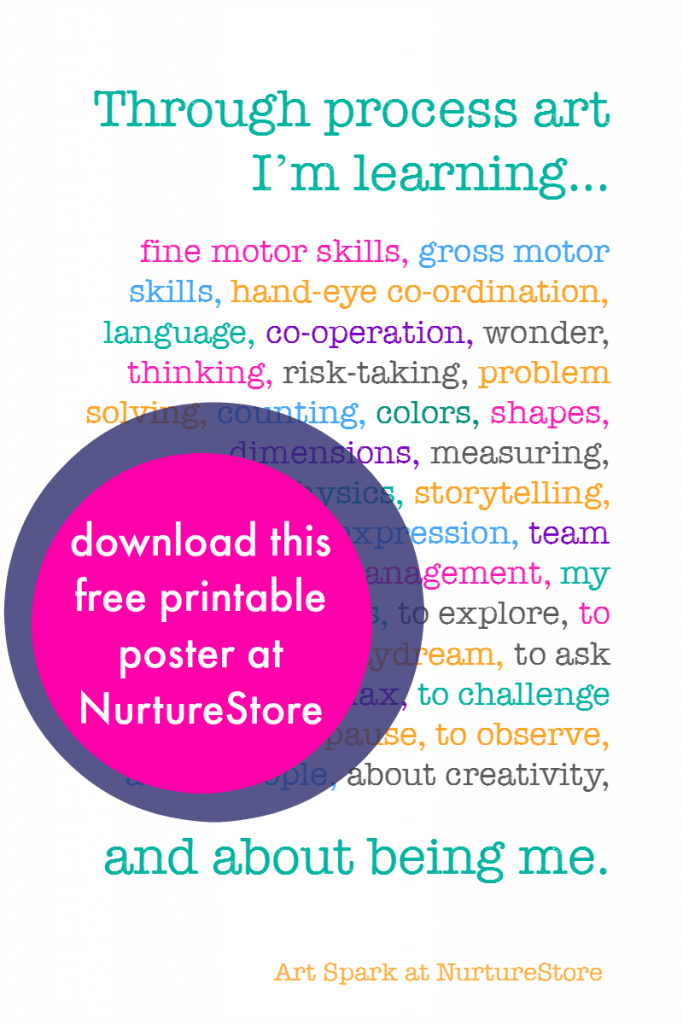
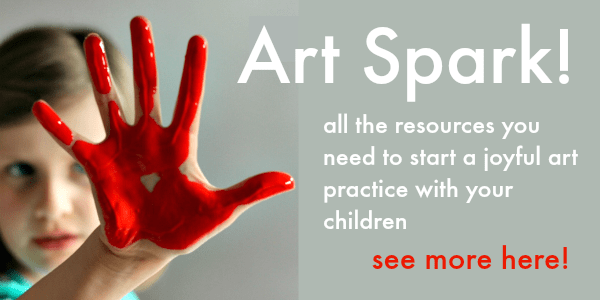
This is just what I’ve been looking for. Your poster is brilliant and will help me explain what we do in our art sessions.
Dear Cathy James,
Thank you for sharing your fun and interesting resources as well as your thoughtful insights ???? Your photos have captured the beauty of a child absorbed in her own learning process.